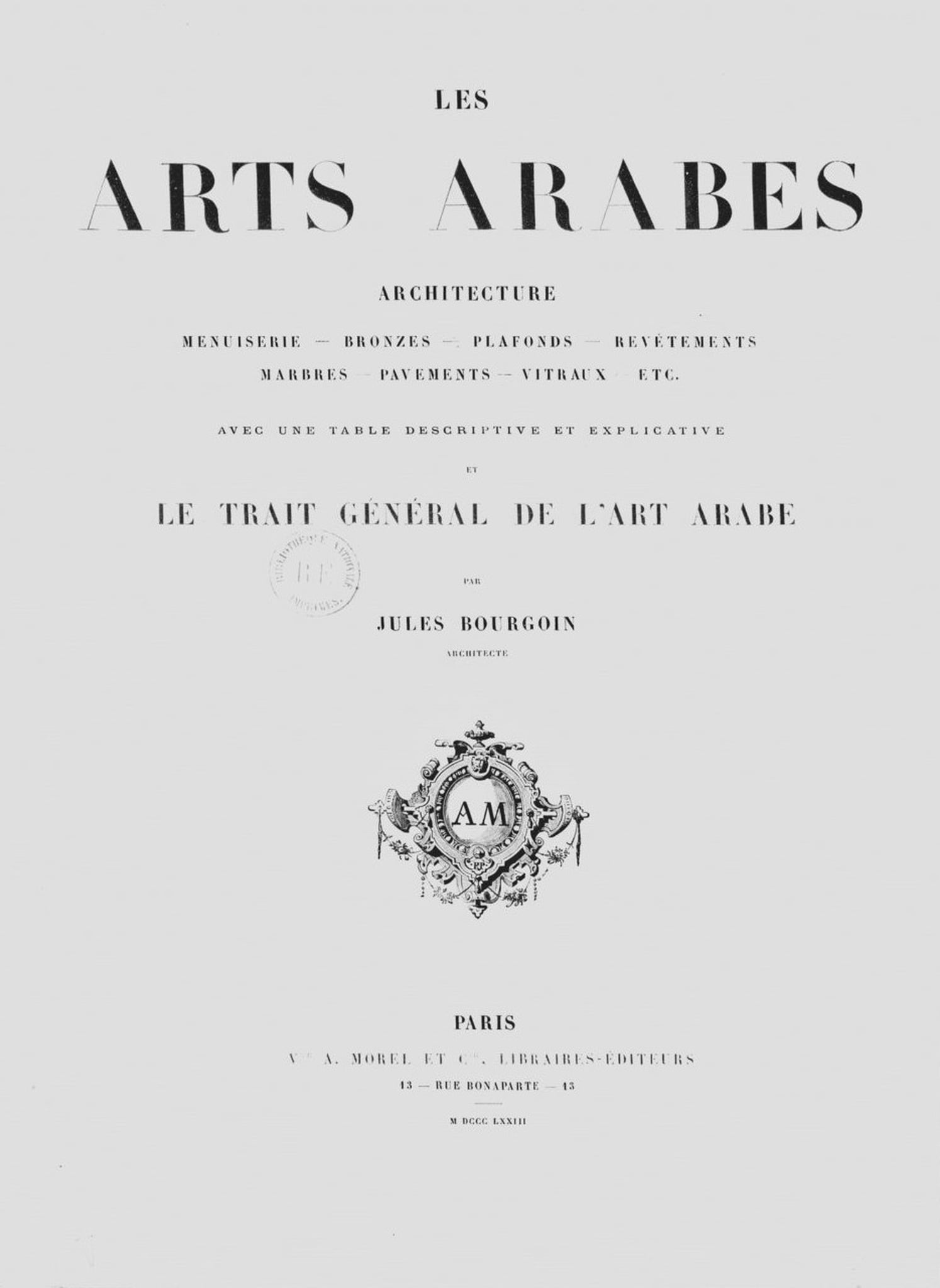Les Arts arabes, based on Jules Bourgoin’s extensive studies and drawings of the architecture of Egypt and Palestine, was published by Auguste-Jean Morel in Paris from 1868 in forty parts. It contains 92 plates, 52 of which are chromolithographs.




Les Arts arabes, based on Jules Bourgoin’s extensive studies and drawings of the architecture of Egypt and Palestine, was published by Auguste-Jean Morel in Paris from 1868 in forty parts. It contains 92 plates, 52 of which are chromolithographs.
Book printing.
The young architect Jules Bourgoin was encouraged by Eugène Viollet-le-Duc to publish the studies he had made in Egypt and Palestine during the years 1863–66. The result was Les Arts arabes, a richly illustrated publication with 92 plates and a short textual commentary. Viollet-le-Duc wrote the introduction and praised the author’s analyses of the geometrical ornamentation of Islamic art (Bourgoin, 1873, p. 7; Bideault, 2012, p. 10). One of the plates shows a stucco and glass window in Cairo (IG_47).
Bideault, M. (2012). Les Arts arabes ([1868]-1873) In Jules Bourgoin (1838-1908) : L’obsession du trait [en ligne]. Paris: Publications de l’Institut national d’histoire de l’art. Retrieved from https://books.openedition.org/inha/4586.
Bourgoin, J. (1873). Les Arts arabes. Architecture, menuiserie, bronzes, plafonds, revêtements, marbres, pavements, vitraux, etc. Paris: Vve A. Morel et Cie.
18.5.2024–1.9.2024: Luminosité de l’Orient, Vitromusée Romont